DP Robbie Ryan ISC BSC paints a picture of compassion using KODAK 35mm film for Ken Loach's 'The Old Oak'
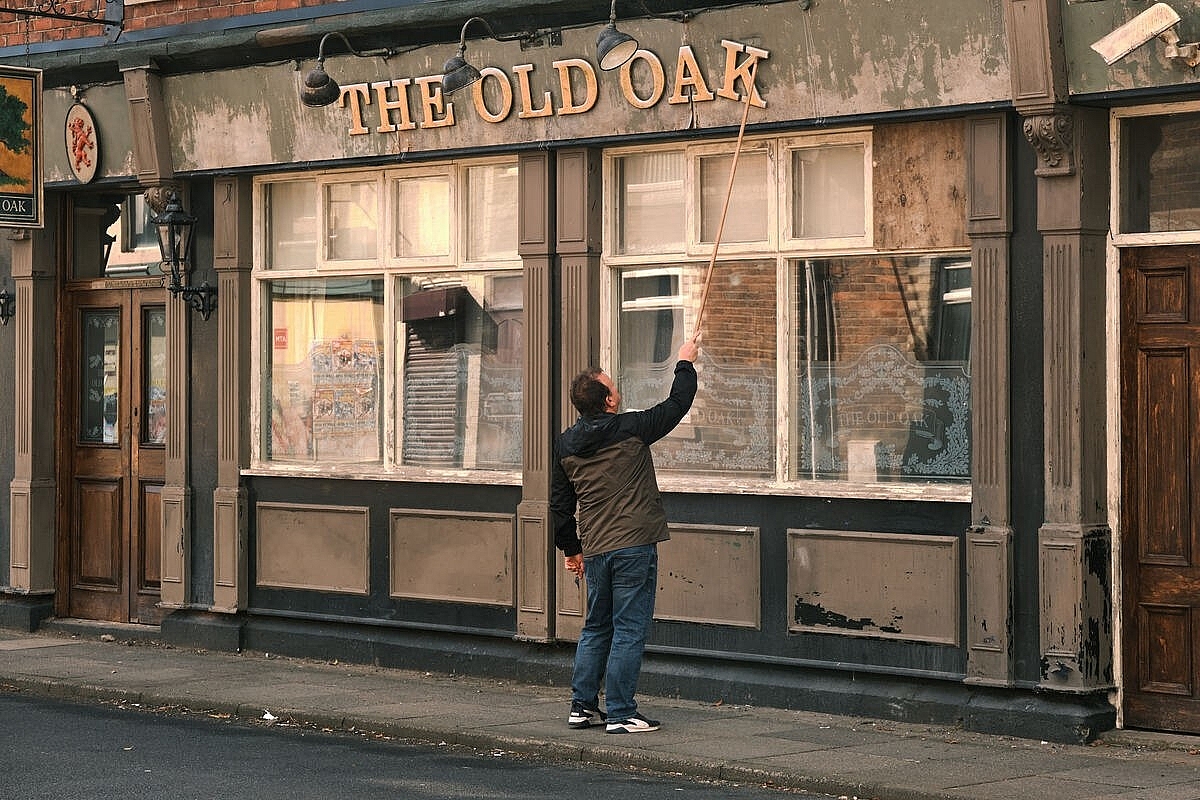
"The Old Oak," directed by Ken Loach, shot by DP Robbie Ryan ISC BSC. Photo by Joss Barratt. © Sixteen Films.
Shooting on KODAK 35mm film, DP Robbie Ryan ISC BSC helped to paint a picture of compassion for Ken Loach's The Old Oak. The acclaimed film, a co-production between the UK, France and Belgium, had its world premiere at the 2023 Cannes Film festival, in-competition for the Palme d'Or, and is thought to be the veteran director's final feature production.
The narrative follows TJ Bannatyne, landlord of The Old Oak pub, in a once thriving mining community in County Durham, in the Northeast of England. Pit closures have made things a struggle for the local community, and property values in the neighborhood have plummeted. TJ barely makes a living serving pints of ale and trying to keep the dilapidated establishment open as the one remaining public space where people can meet.
Tensions rise when Syrian refugees are placed in the town by the local authority and heighten even further after TJ strikes up a friendship with Yara, one of the refugees who documents their arrival using a camera. Things become especially fraught when TJ and Yara encourage the immigrants to share community dinners together in a backroom of the pub that was once used for wedding receptions, but which has been shut down for many years. Inside that room the walls are bedecked with B&W photos of the local community, especially atmospheric shots during the 1984-85 miners' strikes.
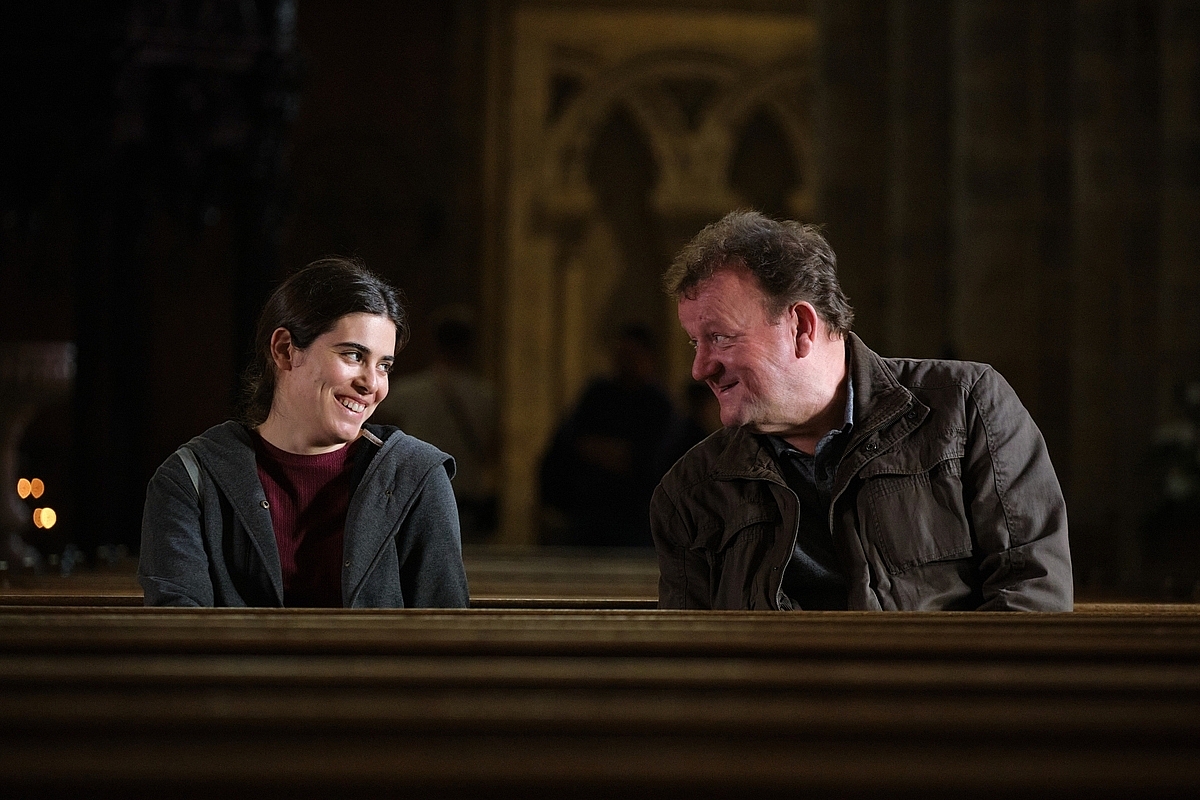
"The Old Oak," directed by Ken Loach, shot by DP Robbie Ryan ISC BSC. Photo by Joss Barratt. © Sixteen Films.
The film stars Dave Turner as TJ Ballantyne, and Ebla Mari as Yara, along with many first-time performers and non-professional actors in front of the camera, including refugees. The script was written by Paul Laverty, and the movie was produced Rebecca O'Brien, both longtime collaborators of Loach.
"I have to say that Ken and his writer, Paul, are razor sharp when it comes to examining social-political themes of the day," says Ryan, for whom the film represents his fifth feature collaboration with Loach, following the 35mm-originated productions of The Angel's Share (2012), Jimmy's Hall (2014) and I, Daniel Blake (2016), plus Sorry We Missed You (2019), which was captured on 16mm film. Ryan is also a frequent collaborator on director Andrea Arnold's films, such as Fish Tank (2009) and Red Road (2006), was Oscar and BAFTA-nominated for Yorgos Lamthimos' The Favourite (2018) and was the DP on the Greek filmmaker's Poor Things (2023). All of these films were also shot on analog film.
"We know that there are many issues in the world, but it's always an education to work on Ken and Paul's films and really focus yourself more sharply on those situations. With I, Daniel Blake it was austerity and the crumbling British welfare system. Sorry We Missed You looked at enslavement in the gig economy. Now, in The Old Oak, it's the issue of immigration.
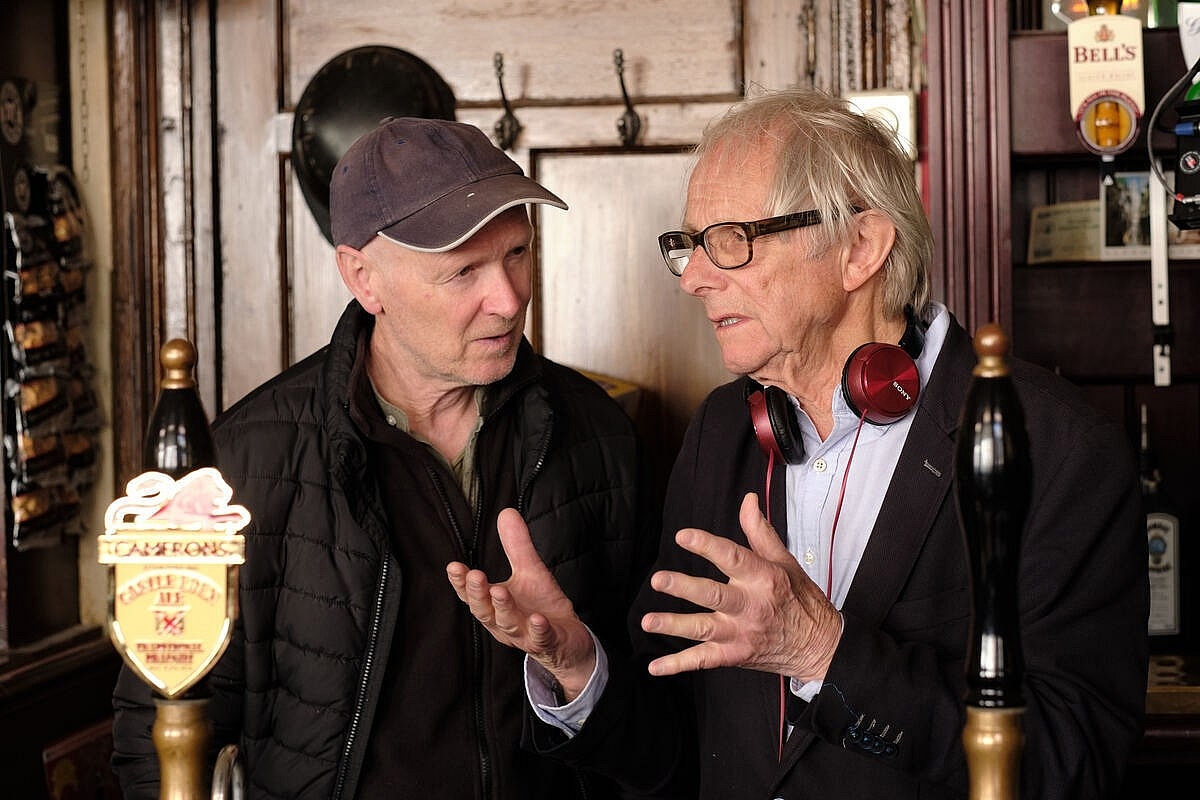
"The Old Oak," directed by Ken Loach, shot by DP Robbie Ryan ISC BSC. Photo by Joss Barratt. © Sixteen Films.
"What I loved about the script is how the white working class and the refugees are treated sympathetically, how they are essentially both the wretched casualties of economic forces and geopolitical troubles, bundled together in the same place, yet with TJ and Yara as the leaders for empathy, compassion, and quite possibly, hope."
And with that in mind, Ryan adopted an observational approach to the camerawork that typifies most of the films he has collaborated on with Loach.
"Ken likes the camera and the crew to be low-key so that the actors and non-actors all feel comfortable to give their best, which they very much did," Ryan remarks. "Also, he is very good about the placement of the camera and the framing, as he always has his mind on how shots will cut together later.
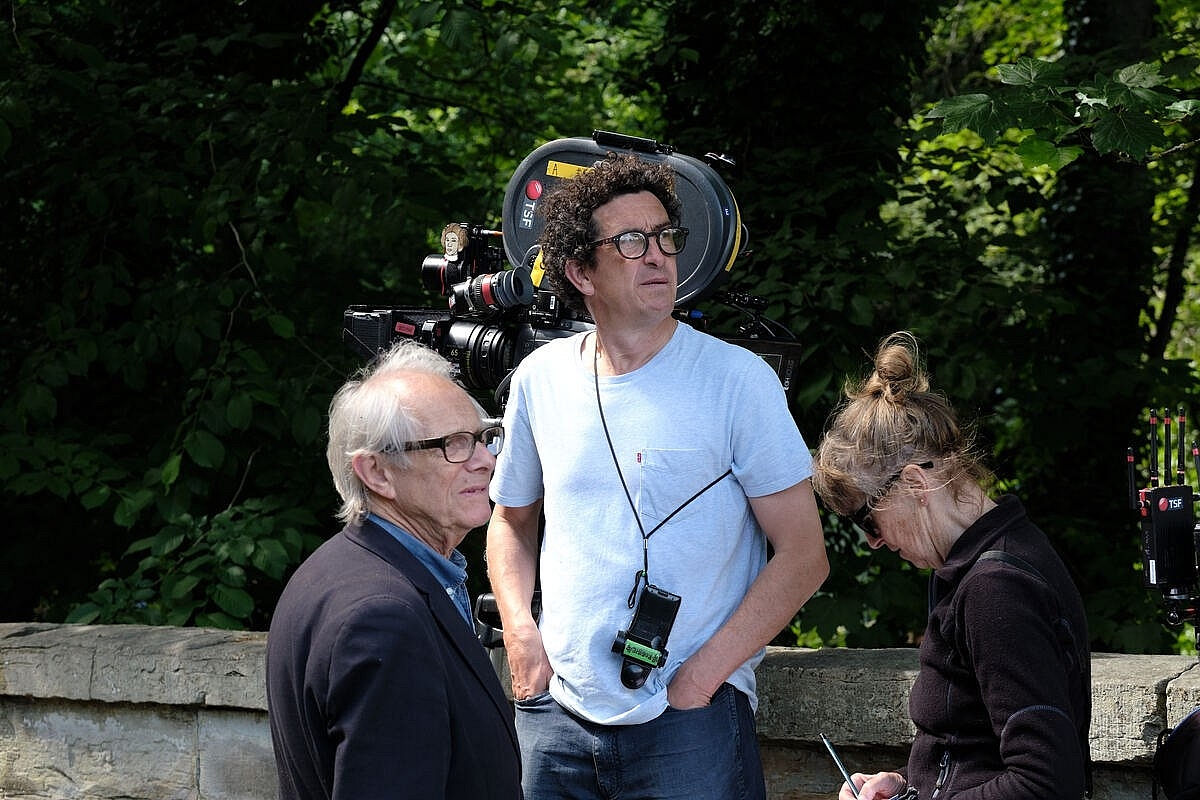
"The Old Oak," directed by Ken Loach, shot by DP Robbie Ryan ISC BSC. Photo by Joss Barratt. © Sixteen Films.
"There were no handheld/Steadicam shots, the camera was on sticks with pans used to give a sense of movement, especially in lengthy scenes with multiple characters, when we also had a B-camera in operation."
Production on The Old Oak took place over six weeks during June and July 2022, at locations in County Durham, including the former mining towns of Murton, Horden and Easington, and at Durham Cathedral. The pub in Murton that features in the film was a disused pub previously known as The Victoria. Of note, both Loach, now 87, and Ryan had their birthdays during the shoot.
Ryan says he didn't reference other feature films for the production but did immerse himself the "wondrously observational" stills work of photographer Chris Killip and his landmark books 'In Flagrante', 'Seacoal' and 'Skinningrove,' collections of documentary photographs made in the northeast England during the 1970s and early 1980s, which feature the miners strikes in 1984-1985.
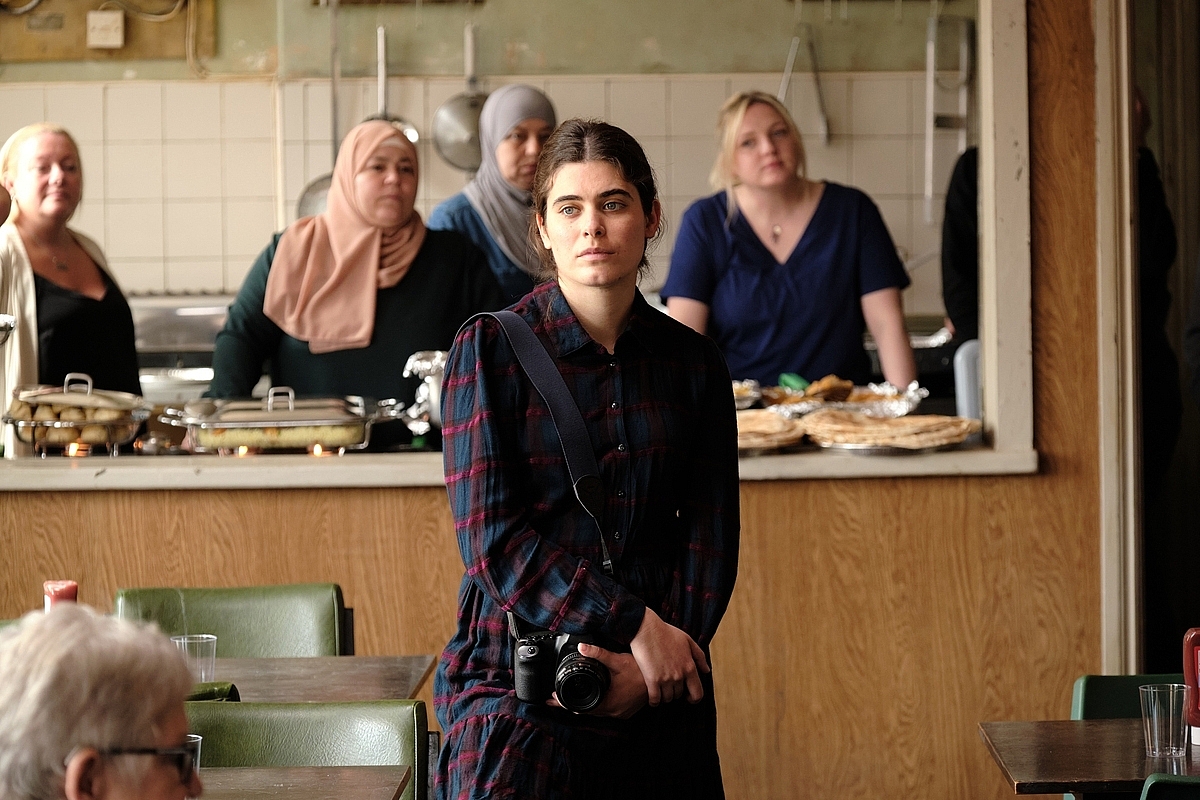
"The Old Oak," directed by Ken Loach, shot by DP Robbie Ryan ISC BSC. Photo by Joss Barratt. © Sixteen Films.
Ryan framed in 1.85:1 aspect ratio and selected an ARRI 35mm ST as the main camera, with an ARRI 35mm LT as a back-up/B-camera, both fitted with ARRI Master Prime lenses, the same combination he used on I, Daniel Blake.
"The ARRI cameras and lenses make for a lovely and very honest combination when shooting on film," he says. "For this production, we shot on the longer end of the focal ranges, from 50mm up to 135mm." The camera package was supplied by TSF Film in Belgium.
Being highly aware of Loach's preference for shooting in available light, and a naturalistic-looking result, Ryan selected KODAK VISION3 500T Color Negative Film 5219 for the production's nighttime exterior/low-light interior sequences, KODAK VISION3 250D 5207 for brighter day interiors, and KODAK VISION3 50D 5203 for the day exteriors. Film processing was done by Kodak Film Lab at Pinewood Studios.
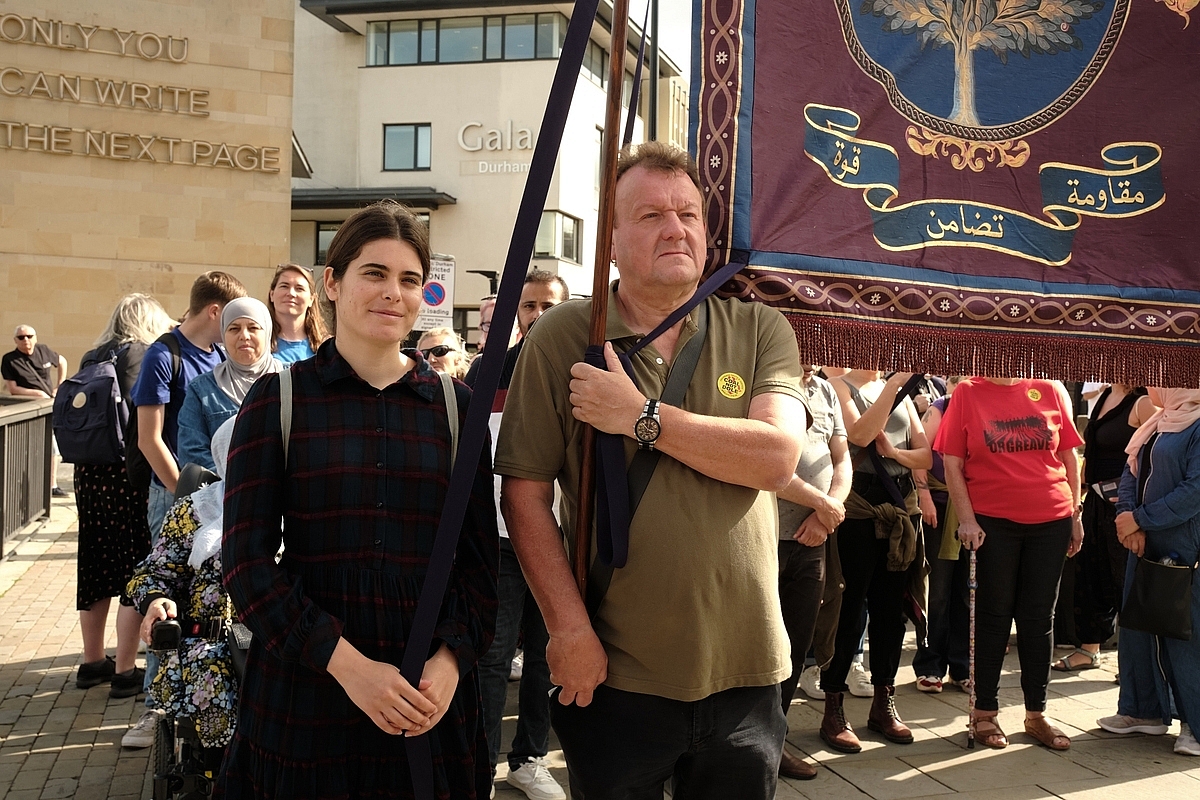
"The Old Oak," directed by Ken Loach, shot by DP Robbie Ryan ISC BSC. Photo by Joss Barratt. © Sixteen Films.
"I have had the good fortune to have shot a lot of films on film over the last 20 years, and I still love shooting on 35mm," Ryan remarks. "I've said it before, and I'll say it again, if you want a filmic result, it's much easier to start with film, and it is always the first and only choice for Ken.
"With digital you to have to try to create the 'filmic look' through things like exposure, LUTs, and lighting, but the default setting of film is a 'filmic look.' It always looks great, straight out of the lab. The way it handles skin tones, details in the highlights, and balances color and contrast is beautiful and honest, and you can certainly feel that in The Old Oak."
Ryan operated the camera during the shoot, assisted by 1st AC Olga Abramson, with Tom Gineyts working as the 2nd AC, Alexandre Cabanne as the clapper/loader, and Florence Gilbertson as camera trainee. Matt Fisher operated B-camera, and Laurent Van Eijs was the gaffer.
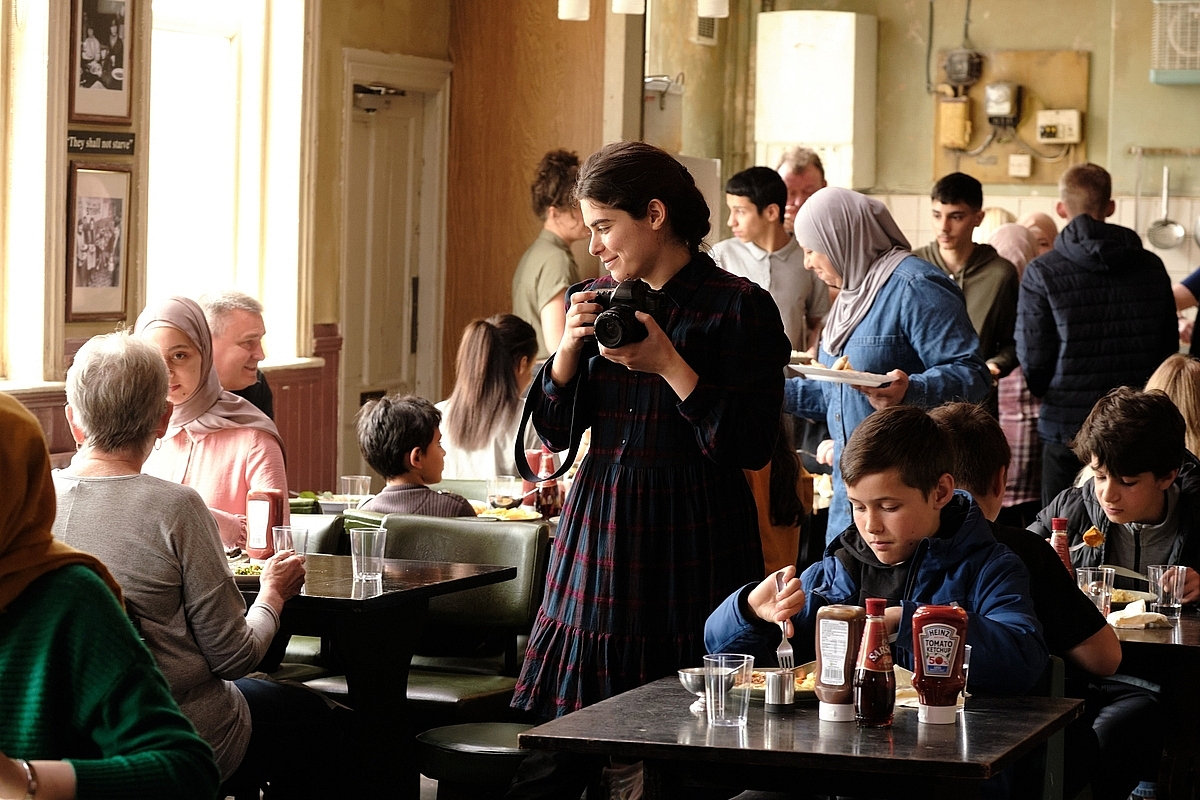
"The Old Oak," directed by Ken Loach, shot by DP Robbie Ryan ISC BSC. Photo by Joss Barratt. © Sixteen Films.
"Ken is always well-prepared. He knows what he wants to do, and how to achieve it," Ryan notes. "And that's especially true when it comes to the locations and where he wants the camera in relation to the sun, because he hates front light and loves natural light, especially backlight. He gets the fear if he sees a lighting stand on the set, that's game over for him.
"Thankfully, he has absolutely no problem with lights that are off the floor and out of shot, in the ceiling. So when we shot the interiors at the pub, I was able to secrete a bank of DMG SL1s above the actors, and push light through the widows using HMIs from outside. The S1s have a slim-profile and are less bulky and obvious that fixtures like ARRI Sky Panels, and the full-spectrum of color rendering looks fantastic on skin tones.
"When we did the recce of Durham Cathedral, of course we had glorious sunlight coming through the stained glass windows, but, of course, the day we shot the sky was really overcast and the place was almost pitch black. Thankfully, Ken was very gracious, and he let me have a few lighting stands that day."
Looking back on his experience of shooting The Old Oak, possibly Loach's last feature, Ryan says, "I felt honoured to get the shout once again from Ken and to work with the same, great supportive production team, around the same great part of the Northeast. He's a true gentleman; he always engenders a lot of levity on set, so it's fun to be there. But crucially, he has been portraying important stories on film for over 50 years, and if he does decide to make another film, I would be there like a shot."